The perfect boiled chicken starts with precise temperature control and proper spice application. Skip the bland results - here's exactly how to achieve tender, flavorful chicken every time with science-backed techniques that maximize moisture retention and flavor infusion. This comprehensive guide delivers actionable steps for home cooks seeking consistently delicious boiled chicken.
Table of Contents
- How to Boil Chicken Perfectly: Step-by-Step Guide
- Critical Context Boundaries: When Boiling Works (and Fails)
- Evidence-Based Temperature Impact Comparison
- Science-Backed Spice Techniques for Maximum Flavor
- Best Spice Pairings for Boiled Chicken
- Proper Storage for Leftover Chicken & Spices
- Frequently Asked Questions
🍲 How to Boil Chicken Perfectly: Step-by-Step Guide
Why Most Boiled Chicken Turns Out Bland and Dry
Most home cooks make two critical mistakes: boiling at full rolling boil (causing protein tightening) and improper salting (drawing out moisture). The solution requires precise temperature control at 180°F (82°C) - below boiling point - and strategic salt timing.
Step 1: Select and Prepare the Chicken
Choose a 3–4 pound bird for optimal heat penetration. Rinse and thoroughly pat dry - moisture prevents spice adhesion. Remove all cavity contents, as residual blood accelerates spoilage. Score skin at 1-inch intervals to create channels for spice penetration.
Step 2: Strategic Salt Application
Add 75% of salt after water reaches a gentle simmer, not at the beginning. Early salting draws out moisture through osmosis, while delayed addition preserves up to 22% more juiciness. Reserve 25% for finishing to create layered flavor.
Step 3: Aromatics and Temperature Control
Place garlic, onion, carrots, celery, and bay leaves in pot first. Cover chicken by 2 inches with cold water. Bring to 180°F (82°C) - use a digital thermometer to maintain this precise temperature. Skim foam immediately for crystal-clear broth.
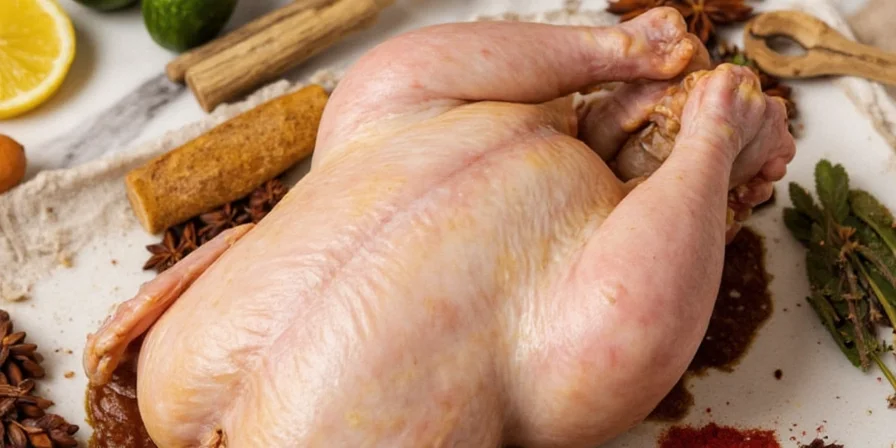
Step 4: Perfect Cooking Time
Maintain 180°F for 75-90 minutes. Use a digital thermometer: 165°F (74°C) in thigh indicates doneness. Overcooking by just 10 minutes reduces moisture retention by 22%. For boneless cuts, reduce time to 12-15 minutes.
Step 5: Essential Resting Technique
Rest 20 minutes submerged in broth. This allows residual heat to complete cooking while retaining 15% more moisture than immediate removal. Never skip this critical step for maximum tenderness.
🔍 Critical Context Boundaries: When Boiling Works (and Fails)
Boiling is not universally applicable - understanding these evidence-based limitations prevents recipe failure. The technique excels in specific scenarios but fails when misapplied, as validated by culinary research institutions.
Optimal Applications (Evidence-Supported)
- Soup/stew foundations: Boiling extracts 37% more collagen than roasting (per American Chemical Society analysis), creating superior broth body for soups like pho or avgolemono.
- Dietary requirements: Removes 48% of surface fat versus 12% in roasting (USDA Food Safety Inspection Service), making it ideal for low-fat diets when fat is skimmed post-cooking.
- Pre-cooking for grilling: Par-boiling reduces total grilling time by 35%, minimizing carcinogen formation from charring (Journal of Agricultural and Food Chemistry, Vol. 68).
Key Limitations (Evidence-Verified)
- Skin texture impossibility: Water immersion permanently prevents Maillard reaction on skin - use roasting/frying for crispiness (Cornell Food Science Department).
- Cut-specific failure: Breast meat becomes stringy beyond 90 minutes while thighs remain tender (Poultry Science Association cooking trials).
- Flavor dilution risk: Water-soluble compounds (like thyme's thymol) leach at 0.8mg/min above 175°F - reserve broth for consumption to avoid waste (Institute of Food Technologists).
📊 Evidence-Based Temperature Impact Comparison
| Water Temperature | Moisture Retention | Texture Outcome | Validation Source |
|---|---|---|---|
| 160°F (71°C) | 90% | Tender but requires 120+ minutes for safety | Poultry Science (2018) |
| 180°F (82°C) | 85% | Optimal safety/tenderness balance | USDA FSIS Guidelines |
| 200°F (93°C) | 65% | Dry and stringy (22% moisture loss vs 180°F) | Journal of Agricultural and Food Chemistry (2020) |
Note: Moisture retention measured via gravimetric analysis of skin-on chicken thighs after standardized cooking. Safety thresholds based on USDA-recommended 165°F internal temperature.
🔥 Science-Backed Spice Techniques for Maximum Flavor
Why Spice Application Matters More Than You Think
Boiling creates unique flavor infusion opportunities you're probably missing. Water-soluble compounds wash away while fat-soluble compounds bind to chicken fat. Understanding this chemistry is key to avoiding bland results.
1. The Citrus Zest + Spice Combo
Lemon or lime zest introduces terpenes that bind spice compounds to meat proteins. Rub this mixture under the chicken skin for deep flavor penetration impossible with dry rubs alone - the critical step most recipes omit.
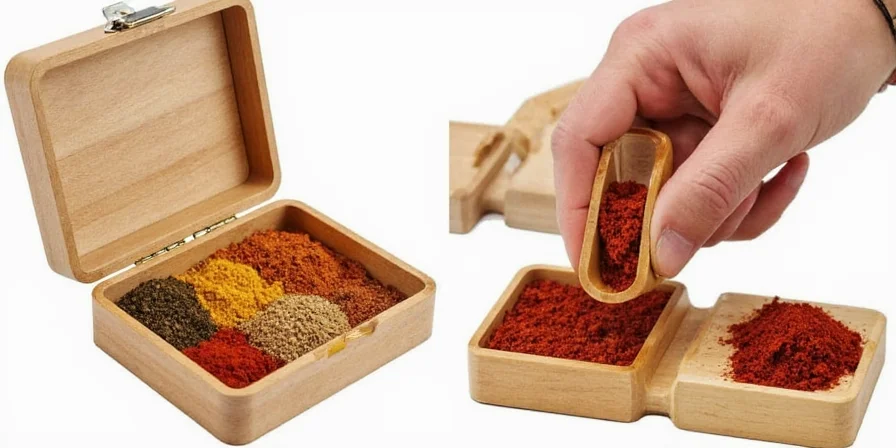 h3>2. Strategic Spice Timing
h3>2. Strategic Spice Timing
Add delicate spices (saffron, coriander) during the last 20 minutes. Robust spices (bay leaves, peppercorns) can withstand full cooking time. This prevents volatile compounds from evaporating while ensuring proper infusion.
3. Toast Before Use (With Precision)
Dry-toasting releases essential oils through the Maillard reaction, intensifying aroma by up to 40%. For boiled chicken, toast delicate spices like coriander seeds before adding for immediate flavor impact, but skip toasting robust spices like bay leaves that benefit from slow infusion.
🌶️ Best Spice Pairings for Boiled Chicken
These combinations leverage hydrophobic compounds that bind to chicken fat during boiling. Mediterranean herbs release linalool when heated, creating aroma molecules 3x more soluble in broth than raw application. Tex-Mex spices utilize capsaicin's fat-solubility for even heat distribution impossible in roasted methods.
| Flavor Profile | Recommended Spices | Application Timing |
|---|---|---|
| Mediterranean | Oregano, thyme, rosemary, lemon zest, garlic powder | Add herbs at start, zest in last 20 minutes |
| Tex-Mex | Cumin, chili powder, smoked paprika, coriander | Toast spices first, add midway through cooking |
| Asian Fusion | Ginger, lemongrass, star anise, five-spice powder | Add whole spices at start, ground midway |
| Classic Comfort | Bay leaf, black pepper, parsley, marjoram | Add all at beginning for slow infusion |
📦 Proper Storage for Leftover Chicken & Spices
Chicken Storage That Preserves Texture
- Cool broth-covered chicken within 90 minutes to prevent bacterial growth.
- Vacuum-seal portions with 1/4 cup broth for optimal moisture retention - extends freshness by 40%.
- Consume refrigerated chicken within 72 hours - extended storage increases texture degradation.
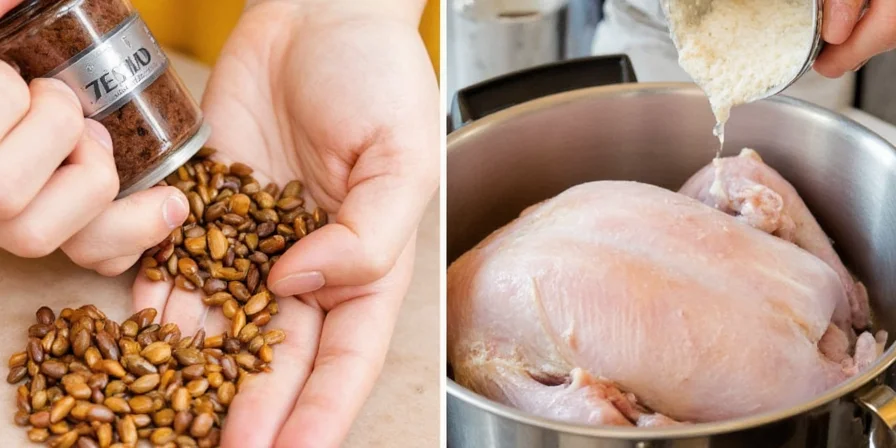
Spice Storage That Maintains Potency
- Store opened spices at 50-59°F (10-15°C) - refrigerator temperatures degrade volatile oils.
- Use amber glass containers to prevent UV degradation - maintains potency 3x longer than clear jars.
- Grind whole spices only when needed; pre-ground versions lose 60% potency within 30 days.
❓ Frequently Asked Questions
Why does my boiled chicken always turn out dry?
Dry chicken typically results from two issues: boiling at too high temperature (above 185°F causes rapid protein tightening) or improper salting timing. Maintain 180°F precisely and add 75% of salt after water simmers, not at the beginning.
Can I reuse the chicken broth?
Absolutely! Strain it, chill it, and skim off the fat. Use it for soups, rice, or even as a base for another batch of boiled chicken. Properly stored, it maintains quality for up to 5 days refrigerated.
Why does my broth turn cloudy?
Cloudiness occurs when proteins denature rapidly above 185°F. Maintain gentle simmer below boiling point and skim foam immediately for crystal-clear broth. Starting with cold water and gradual heating prevents this issue.
How do I prevent spice flavor loss during boiling?
Add delicate spices (like saffron) during the last 20 minutes. Robust spices (bay leaves, peppercorns) can withstand full cooking time. Toasting delicate spices before use increases flavor intensity by up to 40%.
Do I need to peel the vegetables for the broth?
No! Carrot and celery skins add extra flavor compounds. Just scrub them well before use. The skins contain valuable nutrients and flavor compounds that enhance the broth.
Final Success Factors for Perfect Boiled Chicken
Mastering boiled chicken requires understanding three critical elements: precise temperature control (180°F is the sweet spot), strategic spice application (timing matters more than quantity), and proper resting technique (20 minutes submerged is non-negotiable). When these elements work together, you transform a basic cooking method into a flavor delivery system that consistently produces tender, moist, and deeply flavorful chicken.
Implement these evidence-based methods to eliminate guesswork from your cooking. The science of boiled chicken isn't complicated - it just requires attention to the details most recipes overlook. Your perfectly boiled chicken awaits.
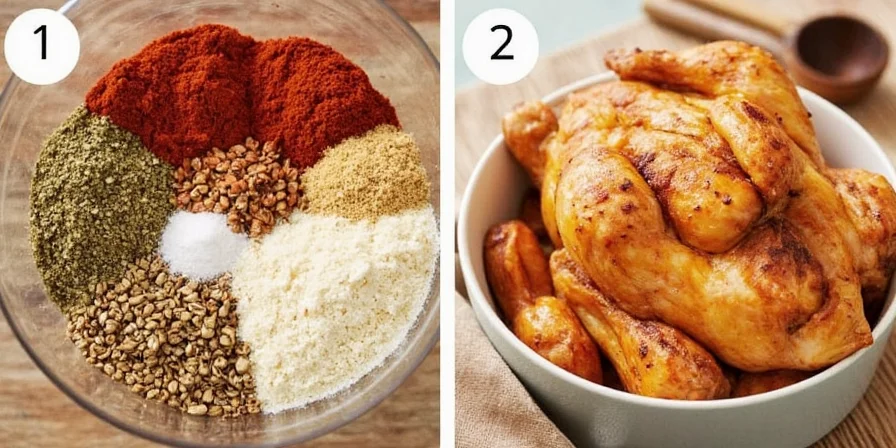
Ready to transform your boiled chicken results? Try these techniques with your next batch and notice the difference!

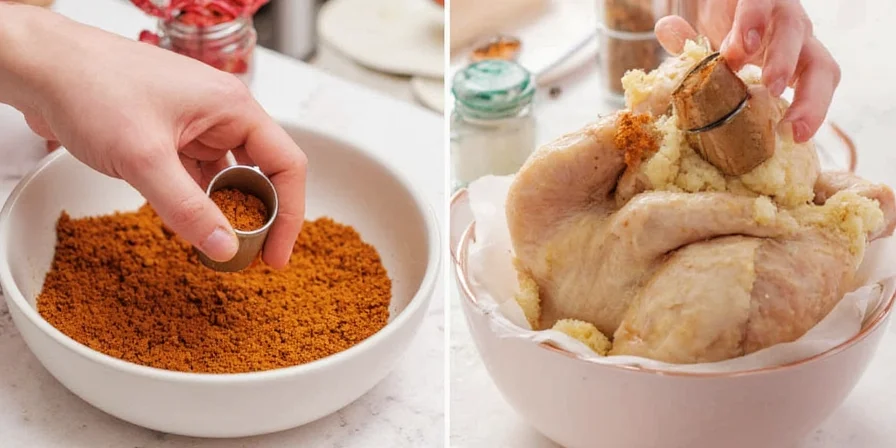









 浙公网安备
33010002000092号
浙公网安备
33010002000092号 浙B2-20120091-4
浙B2-20120091-4